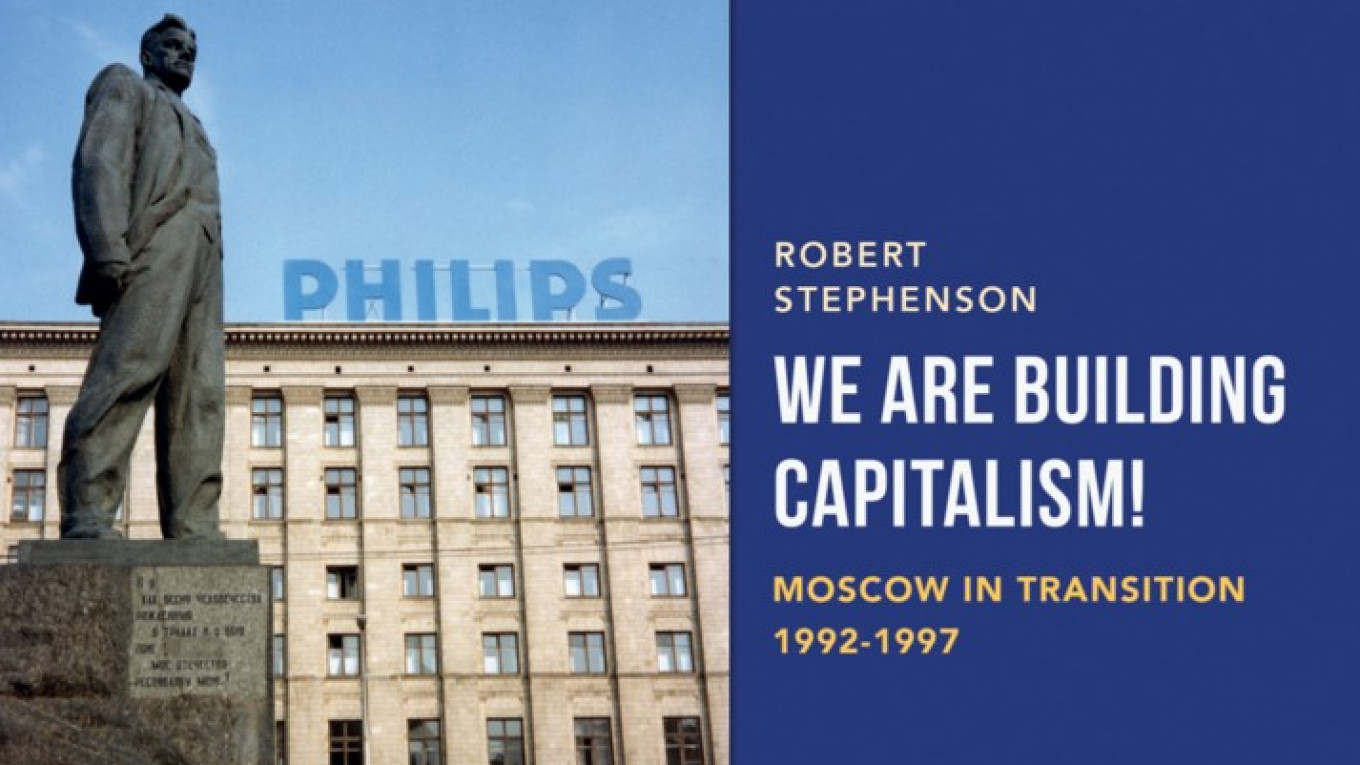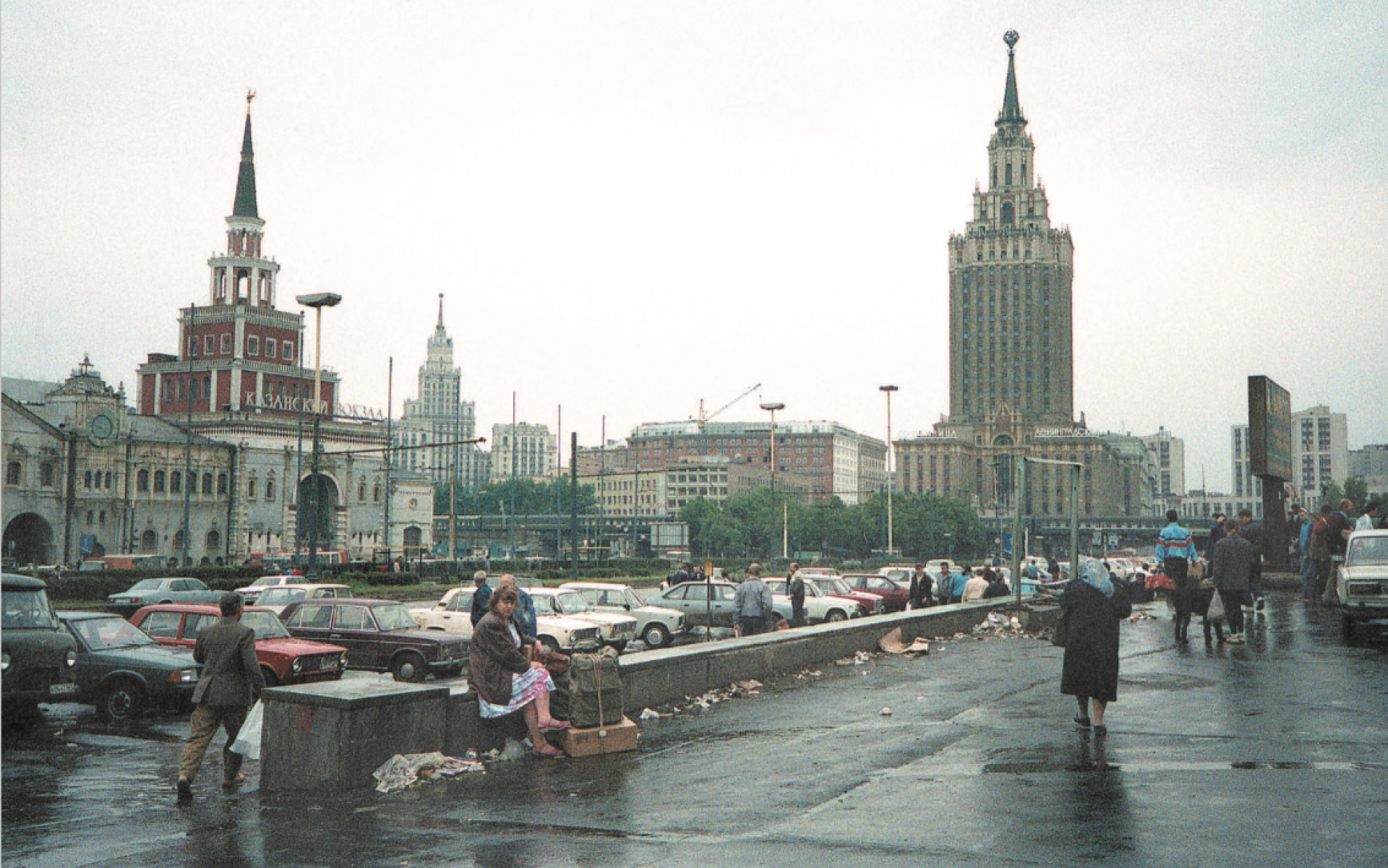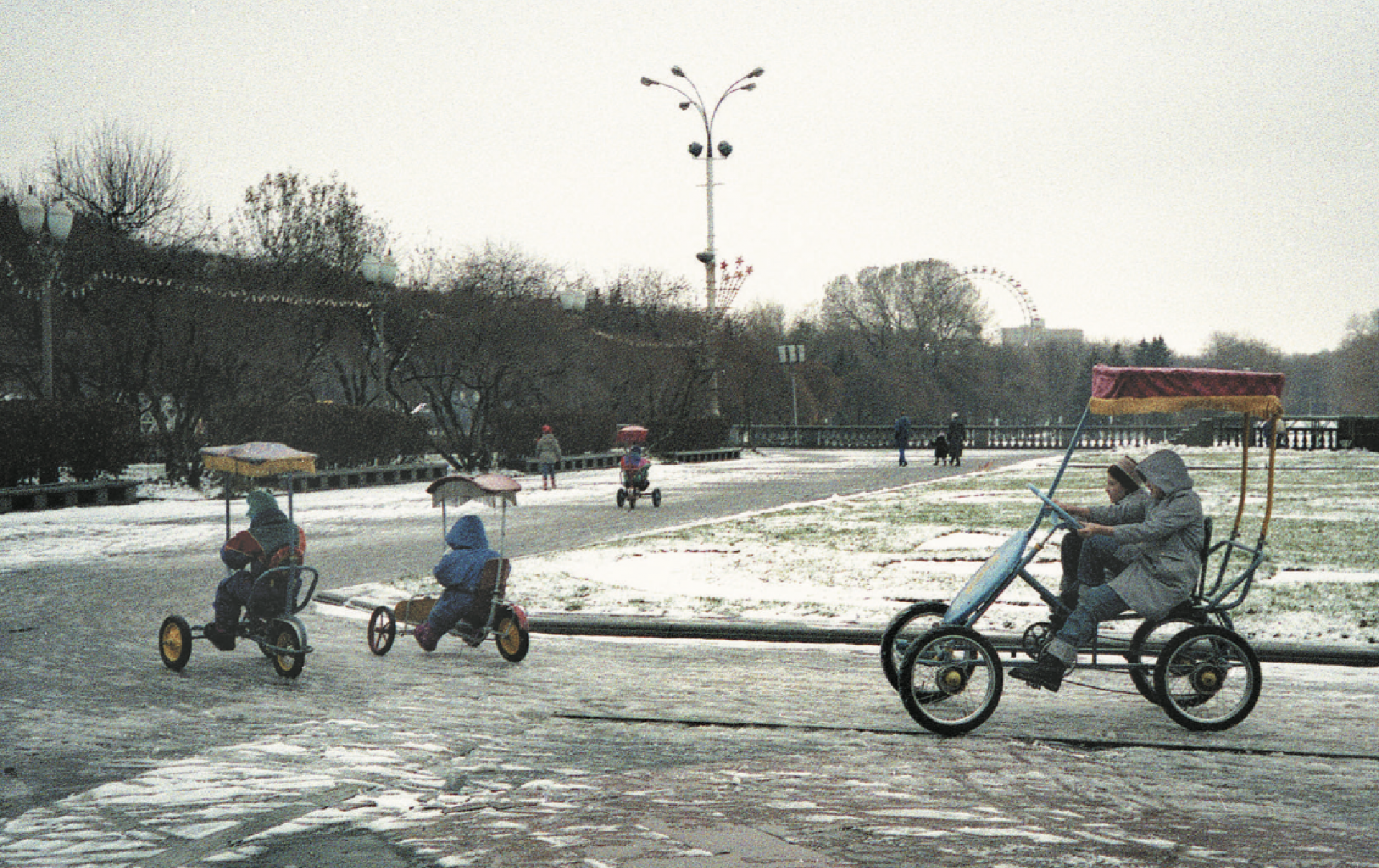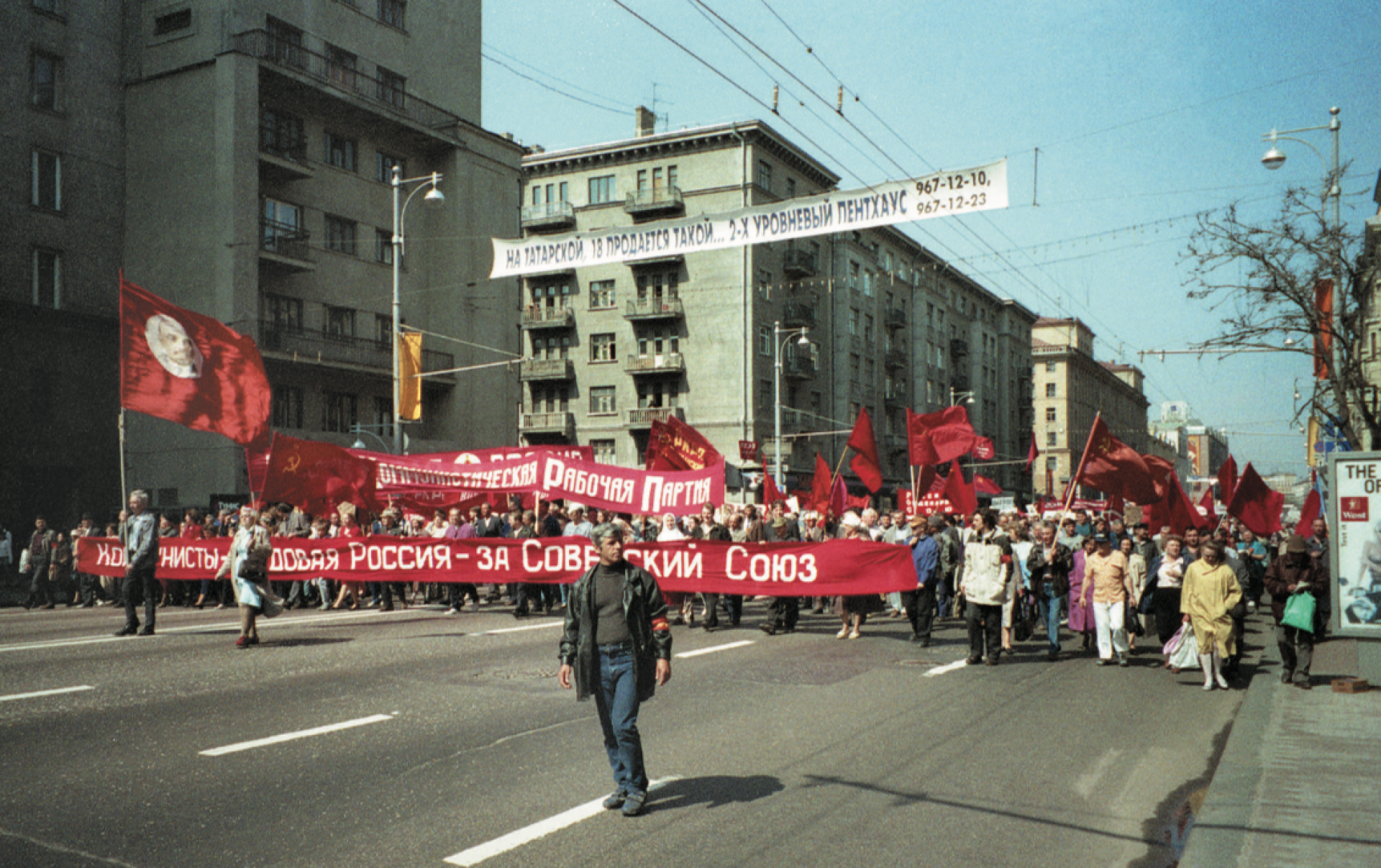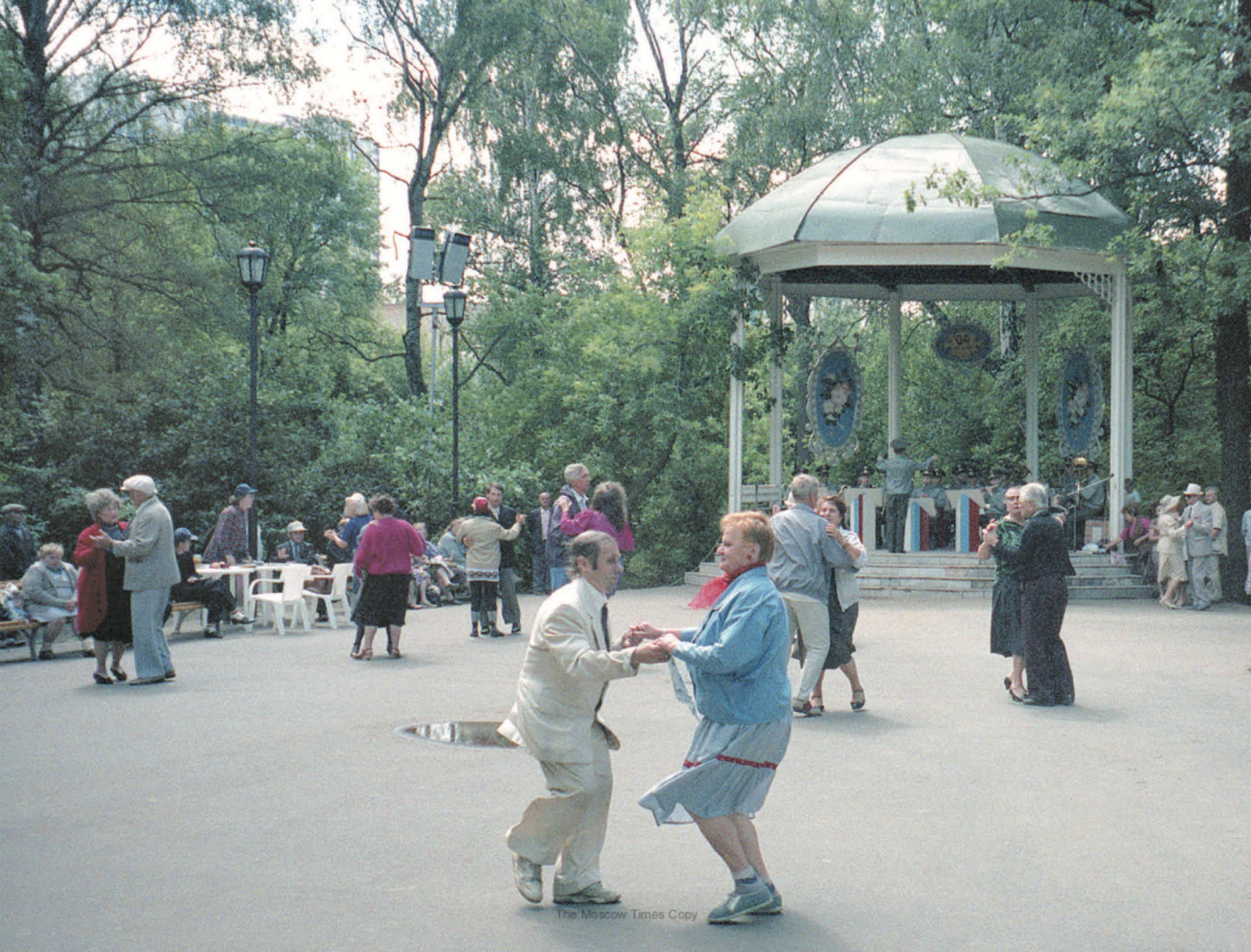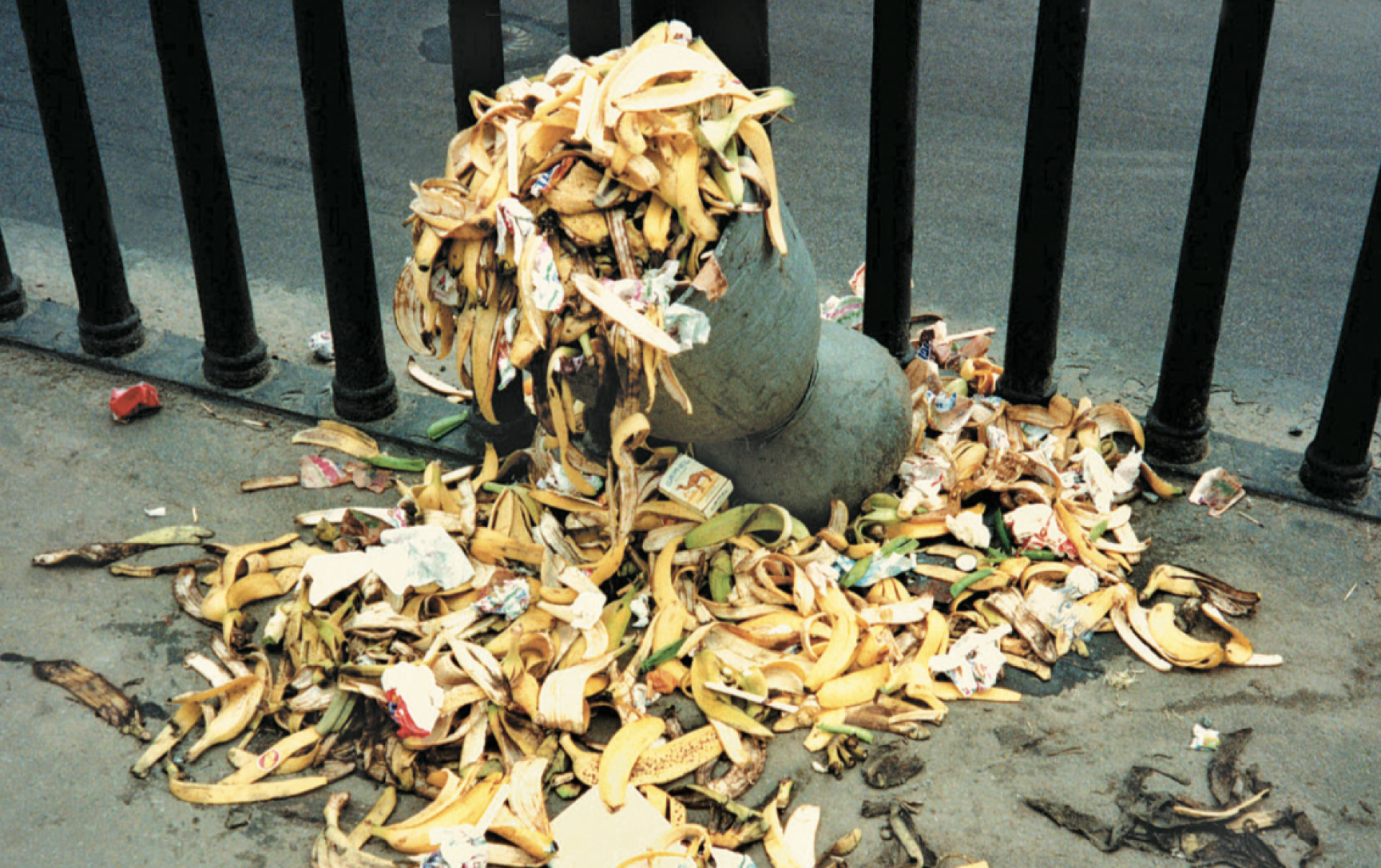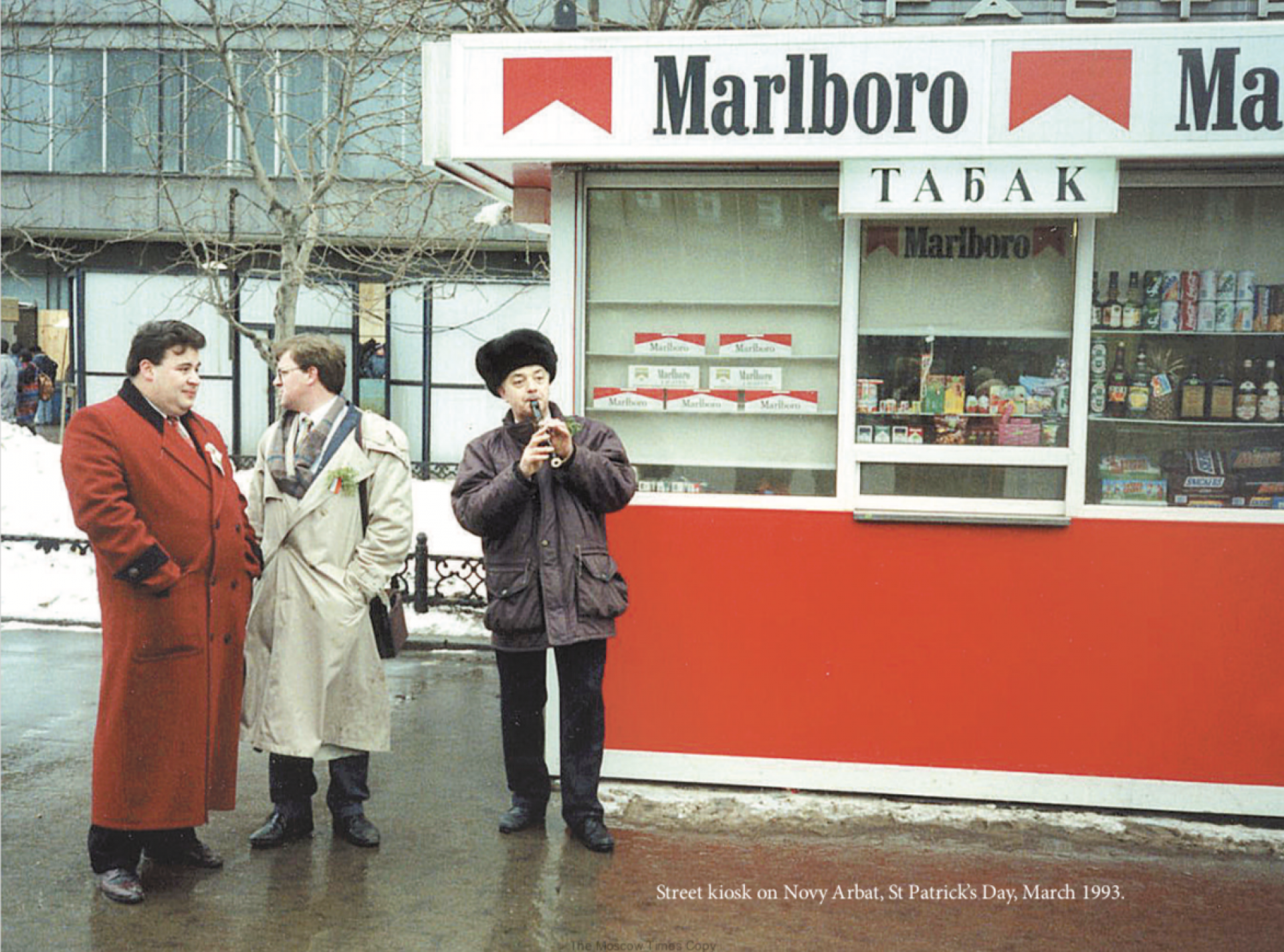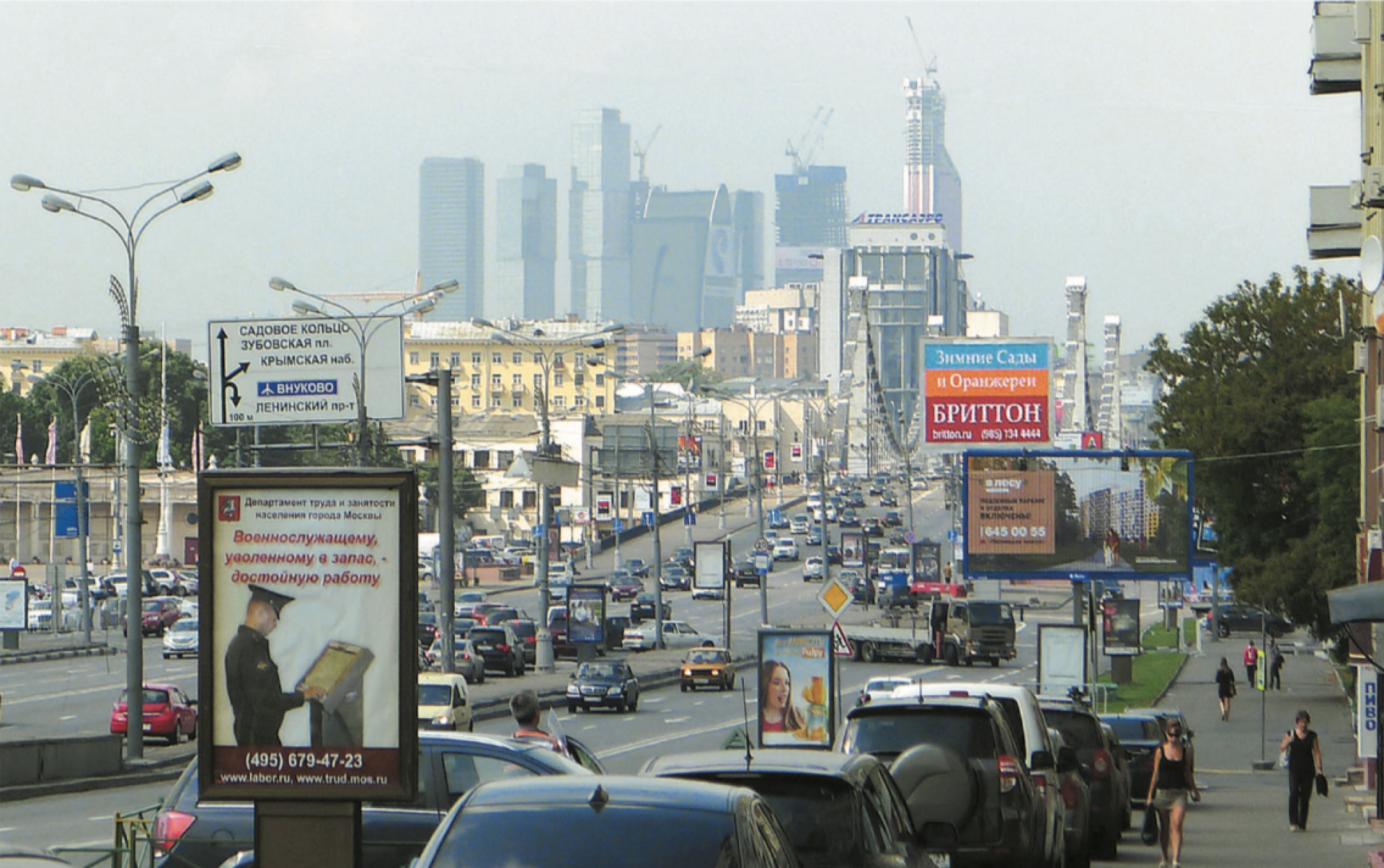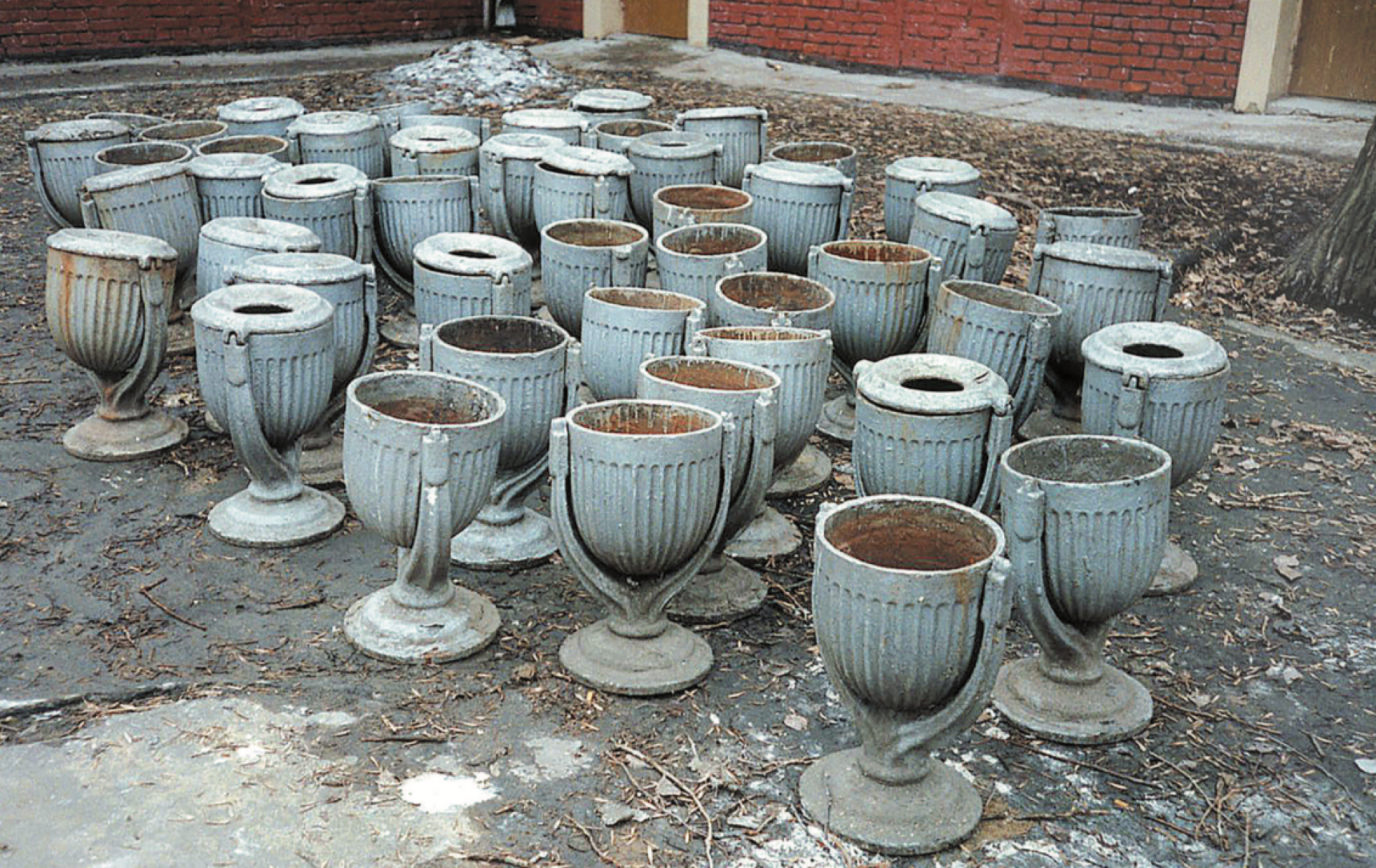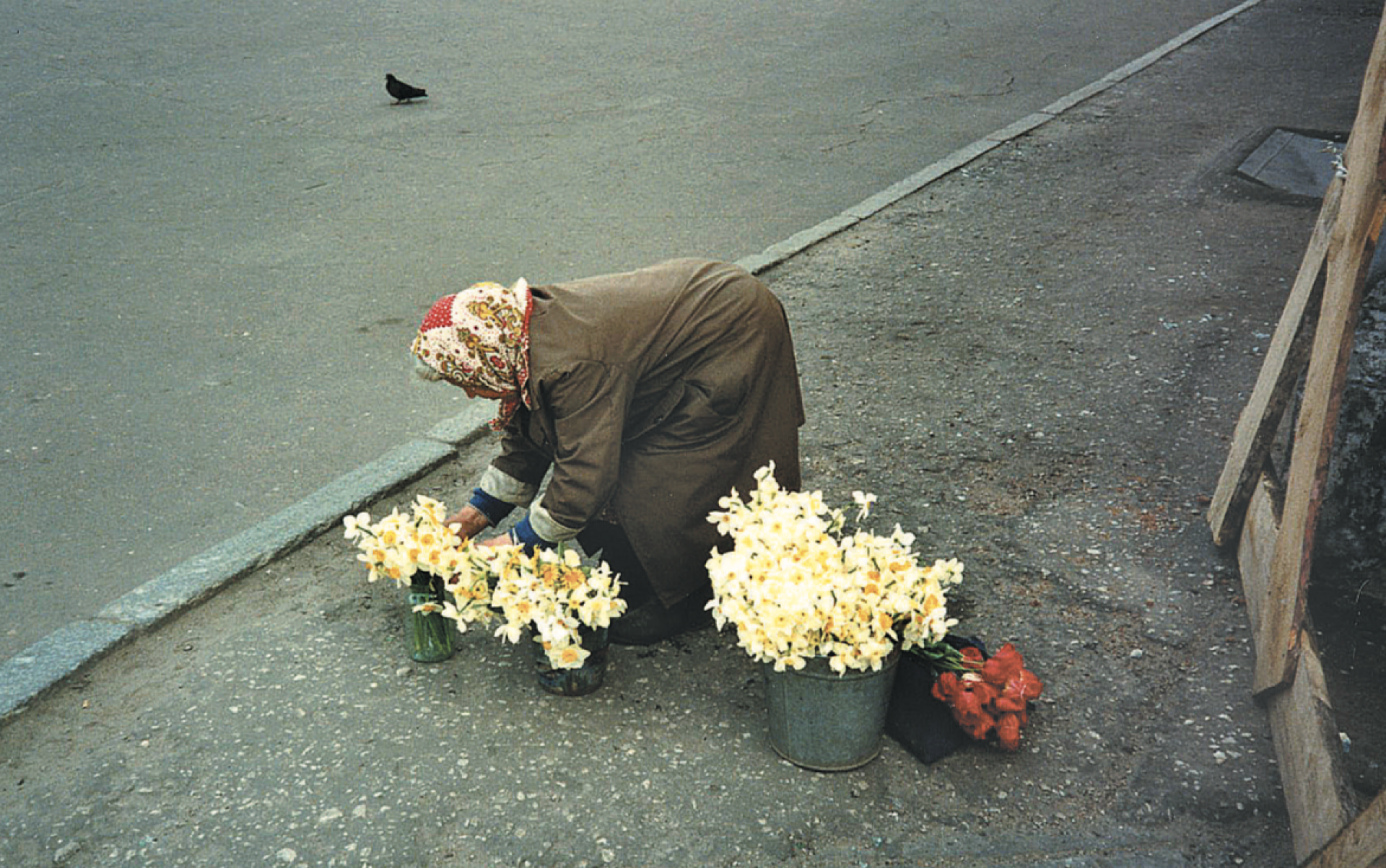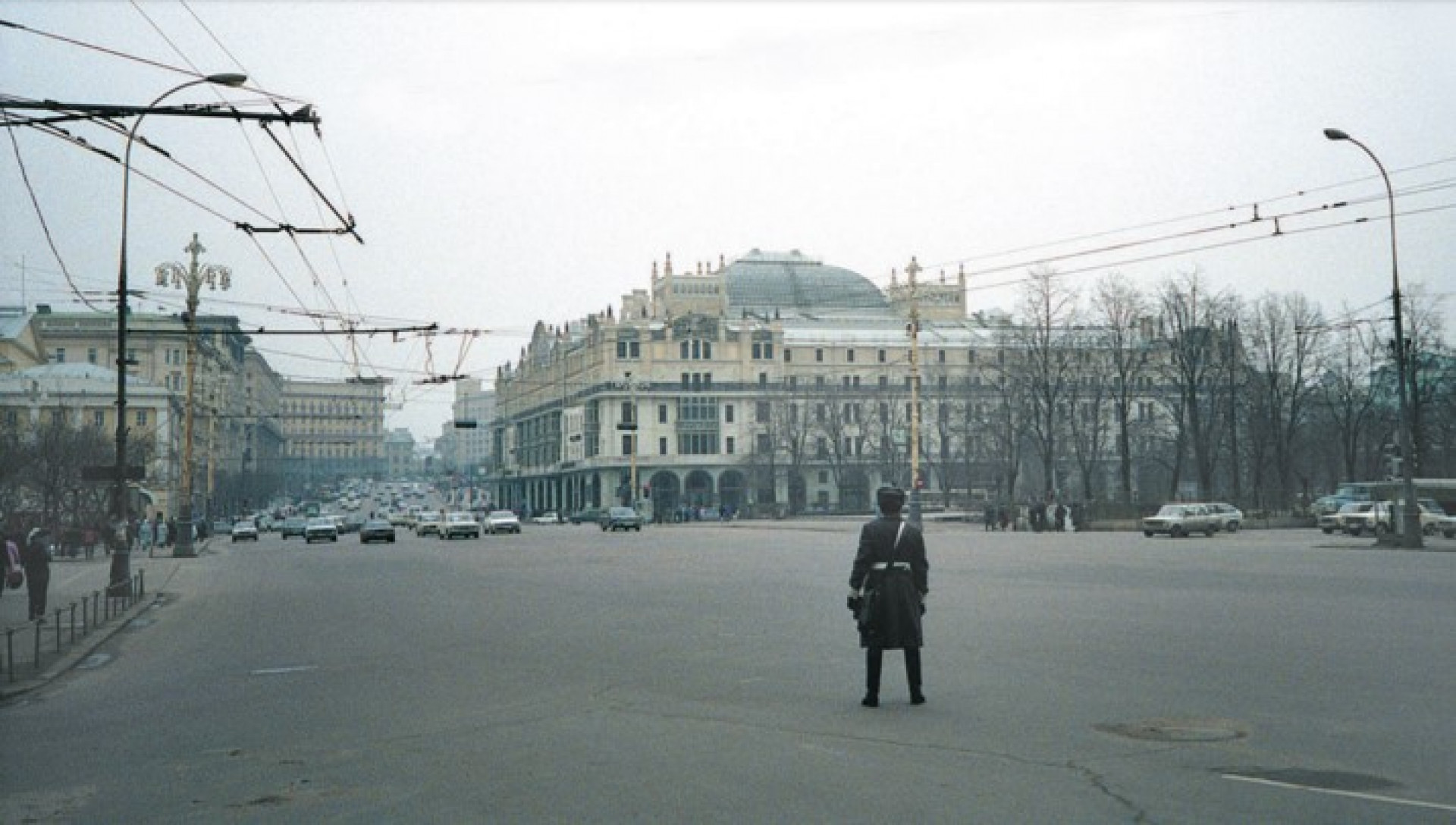“Do you want to go to Russia?”
When Robert Stephenson, a senior civil servant in the U.K. was asked this question in February 1992, he had no idea how it would change his life. But he immediately said, “Yes” and only after a moment asked the more important question: “Why?”
The “why” turned out to be a job as a consultant to the new Russian Federal Employment Service. Stephenson moved to Moscow and worked for five years in the capital with many trips around the country. He continued to work abroad for another 15 years heading international programs to support civil service development and reform around the world.
Throughout his foreign career, Stephenson took photos and, one presumes, notes on the sights and events he witnessed. None were more dramatic than the changes he saw and captured on film in Russia in the most tumultuous years of the post-Soviet transformation. He has gathered them together in a fascinating book called “We Are Building Capitalism! Moscow in Transition 1992-1997.”
“While living and working in the city from 1992 to 1997 I witnessed and experienced at close quarters the impact on people’s daily lives of the turbulent transition from communism to capitalism,” Stephenson writes in the introduction. His book, divided into 11 sections, offers short but succinct and very informative descriptions of the changes in religious expression, nightlife, the marketplace, and daily life he saw, copiously illustrated with his striking photographs.
Stephenson captured all of the strange and contradictory images of Moscow in the 1990s: an Orthodox priest addressing passersby with a loudspeaker, a poster for a new film depicting the lives of sexual minorities in the U.S.S.R., a demonstration against capitalism and rally of the Liberal Democratic Party of Russia (LDPR) supporters, casinos and street musicians, and a pile of banana peels overflowing a rubbish — a stark illustration of how quickly these once rare commodities were purchased and eaten on the spot.
Particularly striking are seeing how the old Soviet symbols were replaced by advertisements of products promising the wonders of the capitalist world: a giant Coca-Cola bottle in the GUM department store or a banner advertising the sale of a penthouse above march in support of a return to the Soviet Union.
In Russia, the period of the 1990s period is covered with a haze of exaggerations and innuendo. The period is proclaimed as the beginning of democracy or not quite the end of communism. Stephenson’s book allows readers to look at this period through the eyes of a foreigner who was neutral and open to all the unusual and contradictory images and events around him.
The backdrop and main subject of the book is Moscow itself, looking down-at-the-heels, dusty and out-of-date, sometimes barely recognizable with empty streets, no foreign cars, and dowdy citizens carrying ubiquitous plastic shopping bags. But it also seems cozy at times, with an almost small-town atmosphere: old people dancing in the parks, a mother and daughter walking along an empty street by the Kremlin, or families riding fun cars in a park.
“We Are Building Capitalism” is a portrait of Russia during the time of fundamental transformations, a time Stephenson compares to the French Revolution —not an uprising, but a time of epochal change. This book is an excellent contribution to a much-needed analysis of this time in recent history.
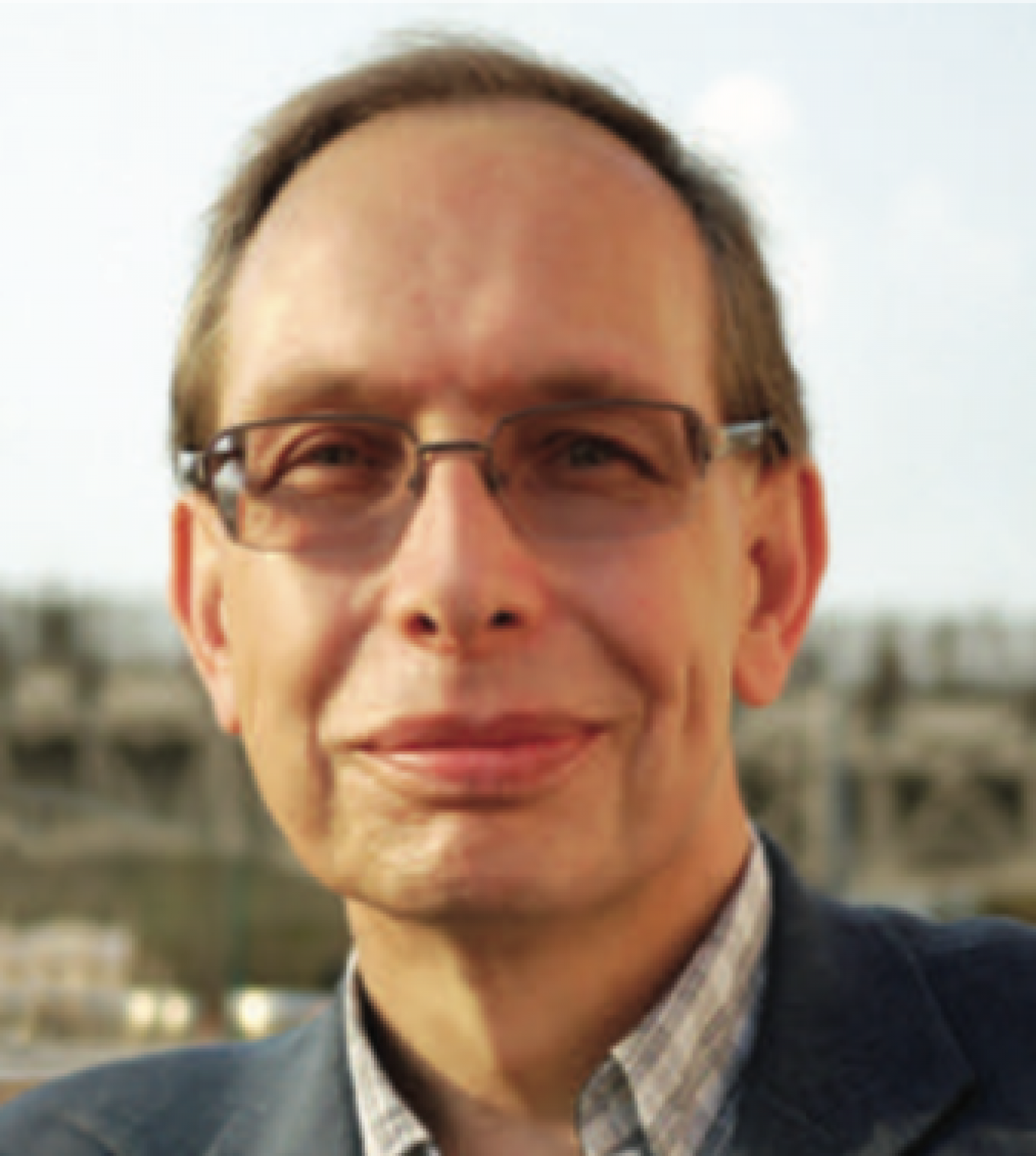
"We Are Building Capitalism!"
From the author's introduction:
Faced with its immediate consequences to their daily lives, many Muscovites resisted, and protested against, the change now happening to them. Dispossessed, destabilised and disorientated, they took their grievances onto the streets. Demonstrations and meetings around key buildings—including the Lenin Museum and the White House—became a regular sight. Popular protest became a common feature of public holidays, such as Victory Day and City Day, which were far from the sedate and highly orchestrated affairs that they have since become.
Public holidays themselves became a source of confusion. New Year’s Day and Victory Day (on 9 May) retained their significance, while other established holidays were retained but had their names changed—for example, “Celebration of the October Revolution Day” on 7 November became the “Day of Accord and Reconciliation”. In the Yeltsin years, as a sign of changing relationships with former enemies, military parades were no longer held on Red Square. New holidays were often announced and timetabled at short notice. These included the rather wordy “Day of the Adoption of the Declaration of Sovereignty of the Russian Federation”, introduced on 12 June 1992 and only later simplified to “Russia Day” in 2002. Traditional days for members of the armed forces or professions (such as “Railway Workers’ Day”), were joined by new days reflecting the changing times, including Den’ Rabotnikov Reklamy (“Advertising Workers’ Day”) in 1995.
Meanwhile, the newly independent mass media were having their heyday. Released from the shackles of censorship, and fuelled by resources from new sponsors and advertisers, television stations attracted huge audiences for glamorous foreign soap operas (Santa Barbara from the US, The Rich Also Cry from Mexico), and produced audacious and exciting news and opinion shows, new dramas, comedy and satire. These included the popular weekly NTV news show Itogi (“Summary”), hosted by Yevgeny Kisilev, which every Sunday evening reported freely on major issues, criticizing authorities and highlighting incompetence and corruption, and the biting Kukly (“Dolls”), based on the British 1980s programme Spitting Image and using grotesque puppets to parody leading political and entertainment figures. Print journalism flourished, with “democratic” publications such as Kommersant, Izvestiya and Novaya Gazeta sharing the newsstands with Pravda and new Russian versions of GQ, Playboy and Vogue.
Culturally it was a time of energy, spontaneity and individualism, with glossy new magazines like Ptyuch and OM reflecting and promoting for the first time the latest styles, fashion and music of a rapidly expanding youth culture, whose tastes included clubbing, raves, skateboards and computer gaming. New authors also emerged to feed a population of readers always hungry for new works. Some, for example Viktor Pelevin and Vladimir Sorokin, were challenging and confrontational. Others catered to popular tastes, particularly Boris Akunin, whose detective novels featuring his hero Erast Fandorin became a literary phenomenon in the second part of the decade, and whose work could be seen in the hands of commuters on every Metro train and trolleybus.
The city’s architecture was rapidly changing too. Under its energetic and ambitious new mayor, Yuri Luzhkov, Moscow’s always eclectic skyline saw a new generation of rooftops, spires and towers added to the existing mix. While exciting new projects sprung up all around the city, some historical buildings in attractive areas, or on now valuable commercial sites, found themselves under threat of demolition and replacement by new hotels, apartment blocks, shopping malls or, increasingly, churches. Many of the charming areas of old Moscow, including the few remaining streets of two-storey buildings left from the time predating the 1812 war with Napoleon, were lost forever.
New and often controversial monuments, many by Luzhkov’s favourite sculptor Zurab Tsereteli, were erected on prominent sites. Outside the city, expensive monstrosities—the mansions of the New Russians—grew up alongside, and in some cases on top of, traditional dacha communities. Many impoverished dacha owners sold their land to members of the new plutocracy. Others who did not wish to do so might arrive to find their wooden summer home in ashes.
These were also violent times. New private businesses became targets for racketeers and rivals, and street killings became a daily occurrence. It was not unusual to find a body prone in the street with passers-by hurrying past and the sound of sirens approaching. We experienced several such incidents close to home. On one occasion a businessman who lived in our building was in his car with his family when a gunman appeared. He ran from the car to draw their fire and was shot down. The body lay under our windows for several hours before being taken away.
By the time Yeltsin stood for re-election in 1996 most of the optimism, passion and excitement of the first years of his presidency had already given way to cynicism and disillusion. In the following years his frequent absences through illness from the public eye (“working with documents”, as the newsrooms euphemistically reported), and growing economic problems leading to debt default and the ruble’s collapse in 1998, paved the way for the entrance of his successor Vladimir Putin at the dawn of the next decade.
From Chapter 8: Attractions and Distractions:
Parks and Recreation
For those seeking outdoor entertainment there were many public parks all around the city.
In Sokolniki Park in northern Moscow, senior citizens, many of whom were suffering most from the impact of inflation, could come together on a Sunday afternoon to forget their woes and dance in the open air to the music of a young army band. Gorky Park, Moscow’s central place of public recreation, still attracted weekend crowds but was in poor shape in the early 1990s. The site for many public celebrations, including the raucous commemorative days reserved for members and former members of branches of the armed services, its entrance and pathways were crumbling, its old fairground attractions were in desperate need of repair and the music which was still piped from loudspeakers along its paths helped to preserve an atmosphere of the past.
Art
Many new and exciting exhibitions opened in the city’s galleries and open spaces. In 1988, the State Tretyakov Gallery, Moscow’s foremost home for Russian art, was closed for a period of renovation that only saw it reopen in 1995, and saw its collection stored and exhibitions held at an annex (the “New Tretyakov Gallery”) of the Central House of Artists (TsDKh), on Krymsky Val opposite Gorky Park. TsDKh and the new gallery became a regular point of call throughout the period for its surrounding sculpture park, its popular outdoor art market, its excellent book stalls and cafe, and of course for its innovative indoor exhibitions showcasing new artists. Artists whose work had previously been banned were now able to exhibit freely and many new and previously hidden works were put on display along with the many classical collections already available.
One early example of the current fascination with reconstructing the historical past was “Khrushchevland”, a nostalgic 1993 outdoor installation in the grounds of VDNKh dedicated to Moscow in the more liberal years of the post-Stalin “thaw” in the late 1950s and early 1960s.
Meanwhile, throughout the decade, the imprint of Zurab Tsereteli spread across the city, leaving its mark on popular sites and skylines. Already a presence, for example for his monument to Russian-Georgian Friendship in Tishinskaya Square, his new works included statues of figures from Russian fairy tales in the new shopping centre in Manezh Square, the Obelisk of Victory at the new Park Pobedy (Victory Park), and, most striking of all, a 100 metre high monument of Peter the Great which was installed in 1997 by the Moscow River close to TsDKh and opposite the newly rebuilt Cathedral of Christ the Saviour and caused public outcry.
Dining Out
A visit to a restaurant was not a regular occurrence for many Muscovites in the Soviet years.
Restaurants were expensive and hard to get into, usually situated in hotels or clubs, or in large establishments with many rooms, and often featured loud semi-live music which killed the prospect of conversation except during breaks and between songs. Established restaurants tended to be named after former republics (e.g. Uzbekistan), or a friendly country’s capital (Prague, Yerevan, Kabul). There were already some more original eateries—including Fellini’s, which opened opposite the Olympic Stadium on Prospekt Mira in 1988—and these were soon joined by smaller and often adventurously named and designed establishments.
Nightlife
Nightclubs also grew in popularity, the most popular including “Night Flight” on Tverskaya Street, which is still going strong, and “The Red Zone” on Leningradsky Prospekt. Another popular venue was the “Slavyansky Bazaar” on Nikolskaya Street. Originally built in 1873, and in its time a favourite of Rimsky-Korsakov, it was destroyed by a fire in 1993.
Excerpted from “We Are Building Capitalism!” text and photographs by Robert Stephenson, published by Glagoslav Publications.
Copyright © Robert Stephenson and Glagoslav Publications 2019
Used by permission. All rights reserved.
For more information about Robert Stephenson and his book, see www.glagoslav.com
A Message from The Moscow Times:
Dear readers,
We are facing unprecedented challenges. Russia's Prosecutor General's Office has designated The Moscow Times as an "undesirable" organization, criminalizing our work and putting our staff at risk of prosecution. This follows our earlier unjust labeling as a "foreign agent."
These actions are direct attempts to silence independent journalism in Russia. The authorities claim our work "discredits the decisions of the Russian leadership." We see things differently: we strive to provide accurate, unbiased reporting on Russia.
We, the journalists of The Moscow Times, refuse to be silenced. But to continue our work, we need your help.
Your support, no matter how small, makes a world of difference. If you can, please support us monthly starting from just $2. It's quick to set up, and every contribution makes a significant impact.
By supporting The Moscow Times, you're defending open, independent journalism in the face of repression. Thank you for standing with us.
Remind me later.


